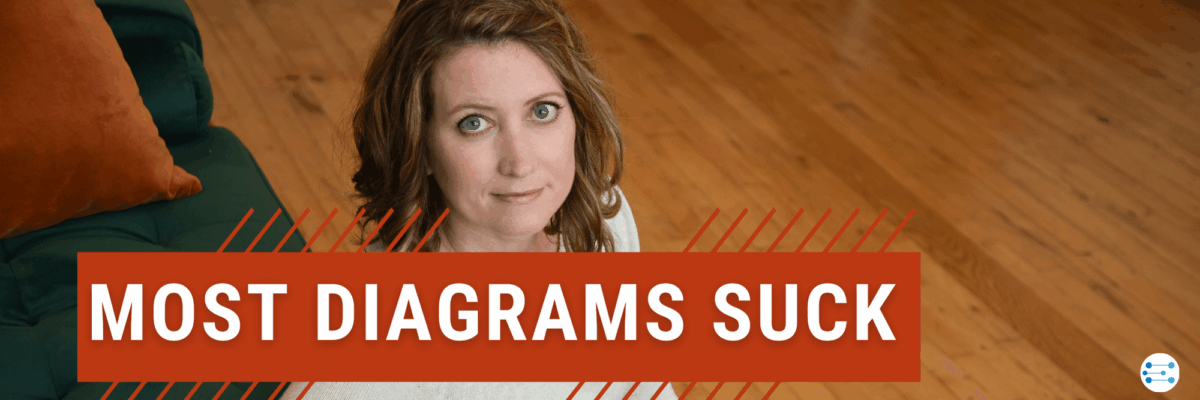Most Diagrams Suck
Here’s why: Diagrams are most useful as a mental organizing activity for the people who make the diagram.
Outsiders coming in fresh have a much harder time seeing how the elements of the diagram fit together and make sense because they weren’t there for the construction.
I learned this lesson the hard way. I had made a diagram illustrating how a new initiative was intended to produce short, medium, and long-term outcomes. I showed the diagram to the top exec in a meeting to pitch my involvement in the project.
“Walk me through this,” he said. Of course. Diagrams don’t make sense to outsiders, even though it made complete sense to me.
When I finished, he said, “This is nice but what interests me is what happens in the arrows between the boxes in this diagram.” Dang. What a good point.
So what do I do? Burn it to the ground?
Diagrams need more text to explain what’s going on.
Let me show you what I mean with a topic so simple you’ll immediately see the problem: how to make a peanut butter and jelly sandwich.
This diagram of the process is fairly helpful, right?

It lacks some necessary details, like a knife and a plate. It lacks some action steps under Activities. It’s also using some fairly unfriendly language like “inputs” and “outputs.”
If I add more words (and, granted, handle some other design elements), I land here:

See how the headings link together to create a sentence that explains what the heck is going on in this diagram?
Adding more words can seem counterintuitive. We’re usually trying to cram so much content into a diagram that we don’t even use full sentences, instead choosing partial chunky phrases. We over-rely on acronyms. And that’s exactly what makes the diagram unreadable to other people.
Don’t be intimidated by this design. If you know how to insert a shape and a textbox in PowerPoint, you have all the skills you need to make a nice diagram. A diagram is just a bunch of lines, circles, rectangles, and icons that are *very well aligned.*
I show, step-by-step, how to make great diagrams and even more qualitative visuals in The Data Visualization Academy. Enrollment opens twice a year. Add yourself to the VIP list for first access next time we accept more students.
While you’re waiting, why don’t ya download my new Qualitative Chart Chooser, with 22 different ways you could visualize qualitative data and concepts, like diagrams.


